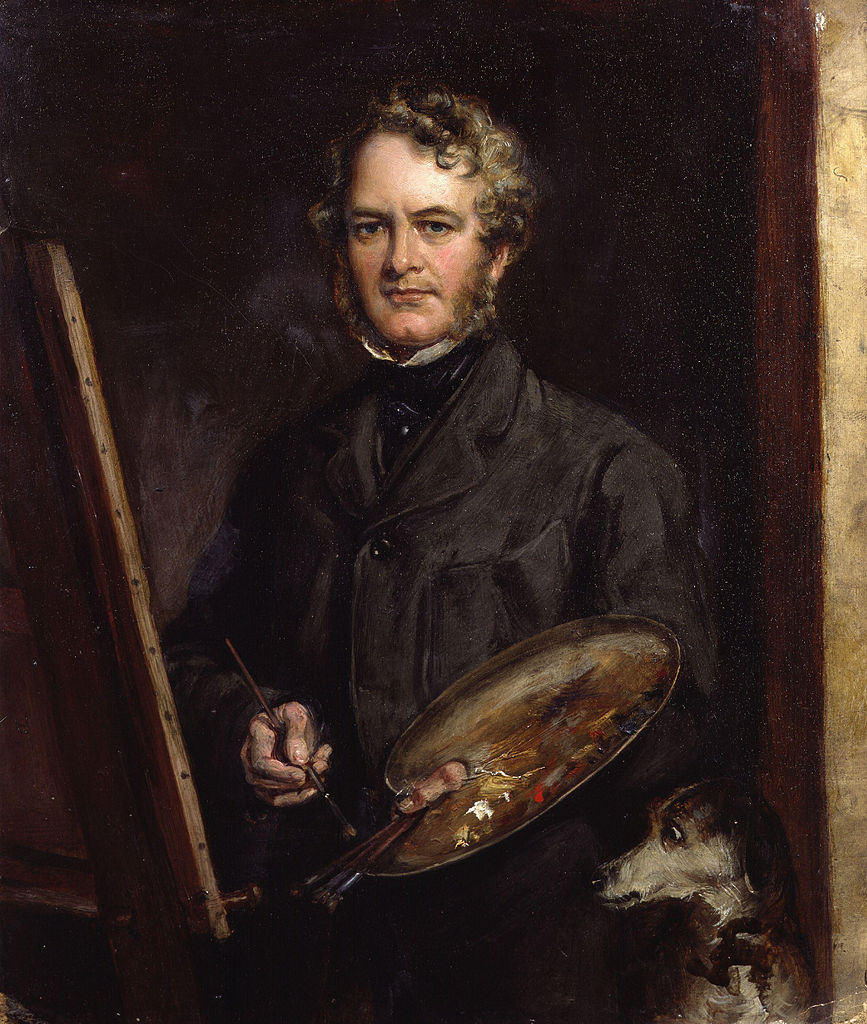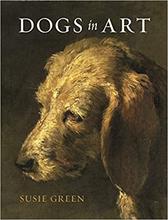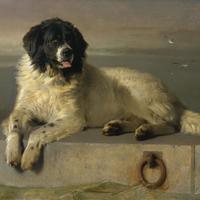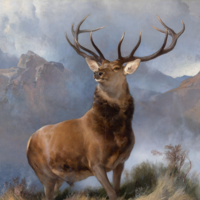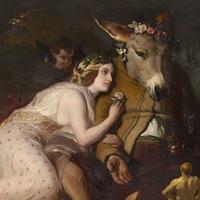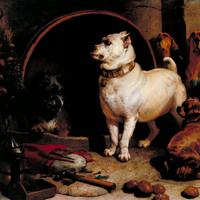More about Edwin Landseer
- All
- Info
- Shop

Sr. Contributor
Also referred to as the Shakespeare of animal painting, Sir Edwin Henry Landseer was perhaps the most prominent animal painter of all time and the favorite artist of Queen Victoria, who awarded him with a knighthood.
When Landseer was only five years old, he started sketching dogs and his dad recognized his talents right away. Unlike many parents who would maybe simply encourage or compliment their child’s work, though, his father gave him edits and pushed him to always do better. Landseer’s supper or bedtime would wait until after he applied his father’s edits.
In short order Landseer became a child prodigy. His father would take him out to sketch cows in the field. One rainy day, when he couldn’t do his normal sketching, he decided to draw a horse in view of his bedroom window. Later that night, it became clear to his family that young Landseer had a ridiculously impressive attention to detail when they overheard his cries of distress that his composition had been ruined by an attendant removing the horse’s saddle.
At the age of seven, his father began taking him to menageries and the Tower of London to sketch lions, which became one of his favorite animals to draw. So much so that later on in life when one of the lions passed away their keeper gave the animal’s remains over to Landseer, who personally taxidermied the lion and kept it as a model to draw from in his studio.
A lifelong animal lover, Landseer took his passion of understanding animals, inside and out, quite seriously. He was performing dissections and studying anatomy, at his father’s insistence, before he even hit puberty. His diligence paid off and his work grew incredibly popular. Paintings such as The Lionness and the Bitch, which was inspired by the story of a real lion cub nursed by a dog who she forever warmly regarded as her mother, popularized odd animal pairings well over a century before the internet even existed.
While dogs have a long history of popularity in art, Landseer’s work gave a new level of personality to his animal subjects. His paintings were so popular, they became engraved and reproduced more than almost any other artist at the time. To be fair, his supportive father was also a talented engraver.
When his work caught the eye of Queen Victoria, he became her lifelong friend and confidant. On occasion, Victoria or her husband, Albert, would enlist his help in creating a surprise gift for the other. In one instance, the surprise was almost foiled when Albert suddenly had need of his hunting gloves and hat that were currently being used for a portrait of his favorite greyhound. Victoria managed to have them both retrieved by a quickfooted servant while she presumably distracted her hubby in order to hide her painting subterfuge. As she commissioned numerous paintings of her beloved pets, it’s fitting that many of Landseer’s works can still be found in the Victoria and Albert Museum.
Sadly, though his success never fully waned, his mental state and eyesight deteriorated later in life. One of his greatest honors was being elected as President to the Royal Academy of Art, and though it may have been one of the proudest moments of his life he declined as he felt himself unfit for the position. Even so, Landseer was so highly regarded that the replacement he nominated also declined, feeling they couldn’t be deserving of a position that Edwin Landseer had felt unsuited for.
Despite all of Landseer’s personal challenges, his last few years saw the completion of one of his masterpieces, the four lion statues in Trafalgar Square. The sculptures were a huge undertaking outside of his normal expertise but after he finished he so was incredibly proud of the immense works that he encouraged anyone who would listen to go buy a photo of them.
Sources
- Landseer, Edwin Henry. Sir Edwin Landseer, R.A. With Portrait, Biography and Ten Photogravures of Paintings. Boston: D. Lothrop, 1886.
- Manson, James Alexander. Sir Edwin Landseer, R.A.Nabu Press, 2010.
- Scott, McDougall. Sir Edwin Landseer, R.A.London: G. Bell & Sons, 1907.
Featured Content
Here is what Wikipedia says about Edwin Landseer
Sir Edwin Henry Landseer RA (7 March 1802 – 1 October 1873) was an English painter and sculptor, well known for his paintings of animals – particularly horses, dogs, and stags. However, his best-known works are the lion sculptures at the base of Nelson's Column in Trafalgar Square.
Check out the full Wikipedia article about Edwin Landseer

